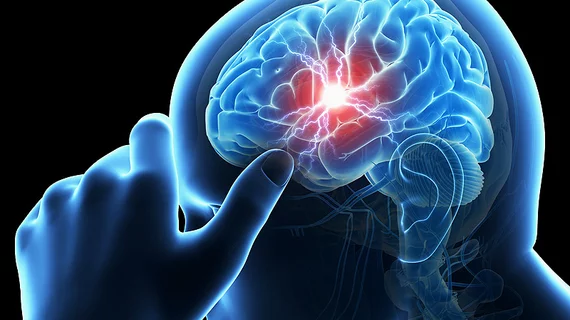Automated CT scores derived from non-contrast CT and CT perfusion exams may improve prognosis and help guide treatments in acute ischemic stroke patients, according to research published in the European Journal of Radiology.
The Alberta Stroke Program Early CT Score (ASPECTS) is a scale that analyzes early ischemic changes identified in multiple portions of the middle cerebral artery. On baseline non-contrast CT (NCCT) exams on stroke patients, ASPECTS has proven to be a valuable prognostic indicator. Although some studies have uncovered inconsistencies in inter-rater agreement in ASPECTS when using NCCT, this is likely due to the reader’s experience level or specialty.
Researchers suggest that the emergence of artificial intelligence algorithms presents a possible solution to this reproducibility issue.
“With algorithmic advancement, automated ASPECTS becomes available and may attain equivalent or even superior performance compared to human readers,” corresponding author Ximing Wang, with the department of radiology at the First Affiliated Hospital of Soochow University in China, and coauthors explained.
CT imaging on stroke patients is critically important to predict prognosis, as certain findings can offer clinicians insight into how patients will respond to various treatments (mechanical thrombectomy, intravenous thrombolysis, etc.). To better understand the role of CT in stroke care, researchers analyzed the agreement of ASPECTS between an automated reader versus human radiologists with varying specialties and experience levels. They also compared the role of NCCT against CT Perfusion (CTP) for prognostic value.
From the 75 patients studied, the automated and manual interpretations yielded fair to substantial reader agreement with CTP and NCCT-based ASPECTS. Both interpretation methods also revealed a strong correlation between CTP-ASPECTS and infarct core volume, compared to a moderate association between NCCT-based ASPECTS.
“Automated NCCT-based ASPECTS could achieve substantial agreement with reference standard and exhibited moderate correlation to CTP-defined infarct core,” the experts noted. “Combining CTP with NCCT findings may provide promising prognosis for thrombolysis-treated acute ischemic stroke patients, especially when well-trained staff resource is scarce.”
You can view the detailed results in the European Journal of Radiology.
Related Stroke Imaging Content:
New CT protocol uses scout images to expedite stroke patients' path to MRI
What decades of data tell us about stroke rates in the U.S.
Most Americans live within an hour of a stroke center
FDA warns providers about potential misuse of imaging-based software for stroke triage
Radiologists must change their approach to stroke care in the AI era
MRI findings associated with poor thrombectomy outcomes after stroke
Risk of recurrent stroke 48% higher among young marijuana users

